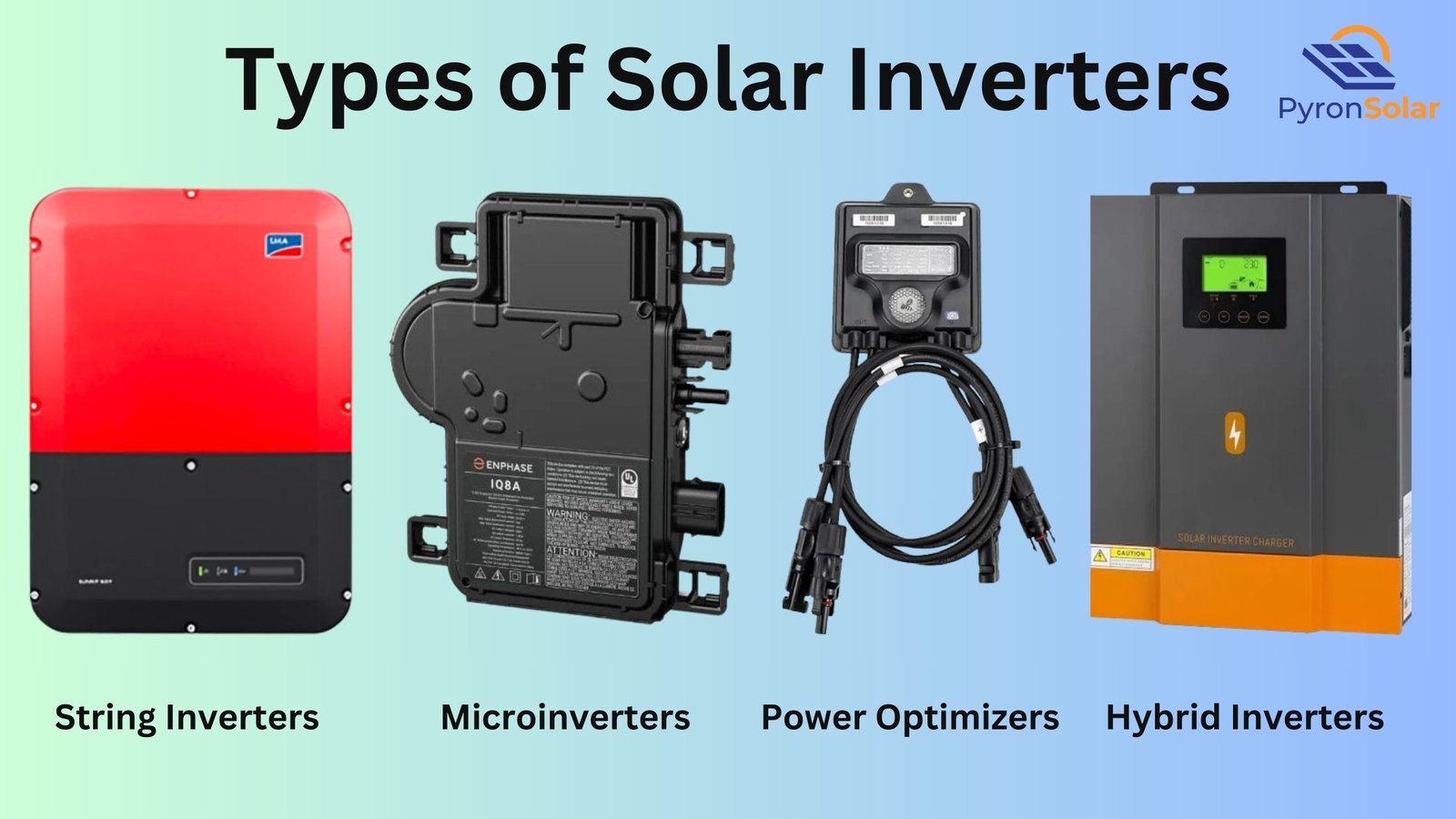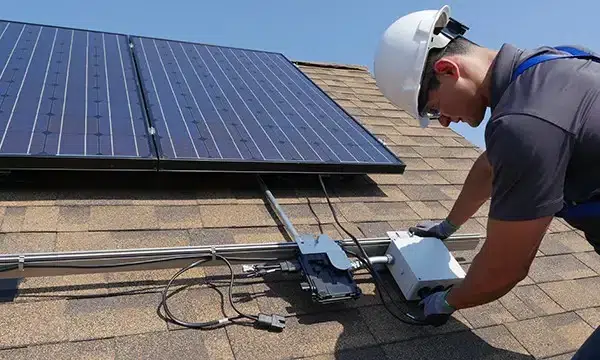Solar inverters act as an intermediary source between the PV panels and the electrical grid to convert DC electricity generated by solar panels into AC electricity that can be used to power household appliances and several other electrical devices.
Selecting an appropriate inverter is essential to optimize the performance and efficiency of a solar power system. It includes evaluating the system size, specific location requirements (such as shading and consistent sunlight), and whether energy storage or grid transfer is needed.
It’s time to explore the different types of solar inverters and how to choose the right variant out of the different types available in the market such as string inverters (individual and combined with power optimizers), microinverters, and hybrid inverters by gaining in-depth knowledge.
What are Solar Inverters?
A solar inverter can be defined as an essential component in the solar panel system that converts Direct Current (DC) into Alternating Current (AC) to make it usable for daily electricity requirements.
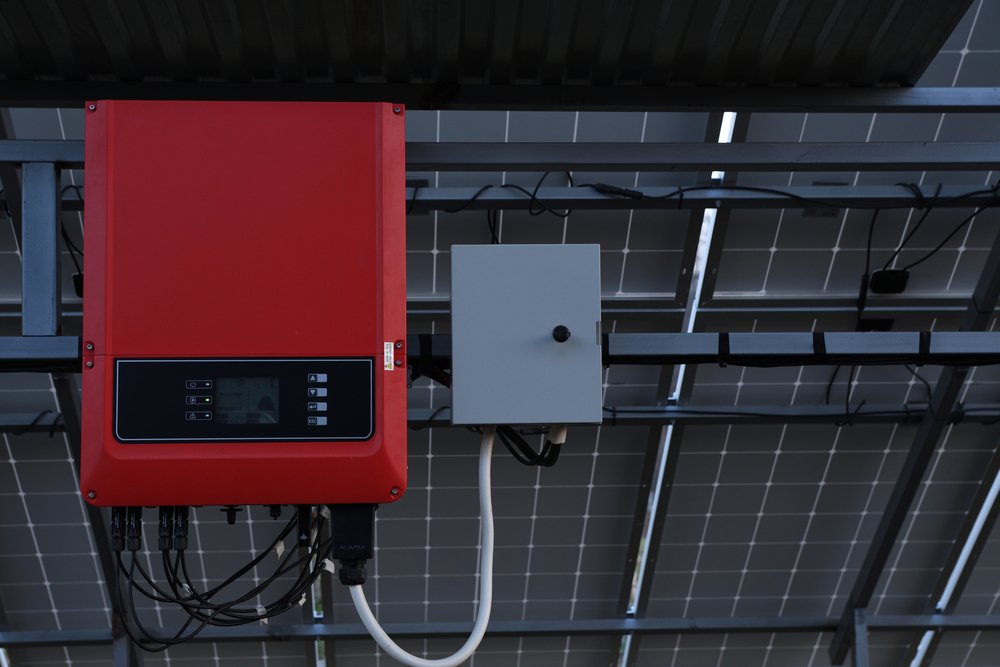
The fundamental purpose of a solar inverter within a solar power system is to ensure the DC-to-AC conversion process can be used by home appliances or fed to an electrical grid at a suitable voltage and frequency. One of the main reasons why the conversion process is essential is because a majority of home appliances cannot run on direct current and the power loss is more when compared to alternating current.
Additionally, solar inverters serve the main purpose of controlling energy production, tracking power output, feeding excess power to the grid, facilitating maintenance and troubleshooting, and finding faults within the electrical wiring or solar equipment. If the inverters aren’t included, the solar panel’s produced energy would be non-compatible with a majority of electrical devices and systems.
Types of Solar Inverters
These are the four main types of inverters available in the market, namely:
- String Inverters
- Microinverters
- String Inverters with Optimizers
- Hybrid Inverters
1. String Inverters
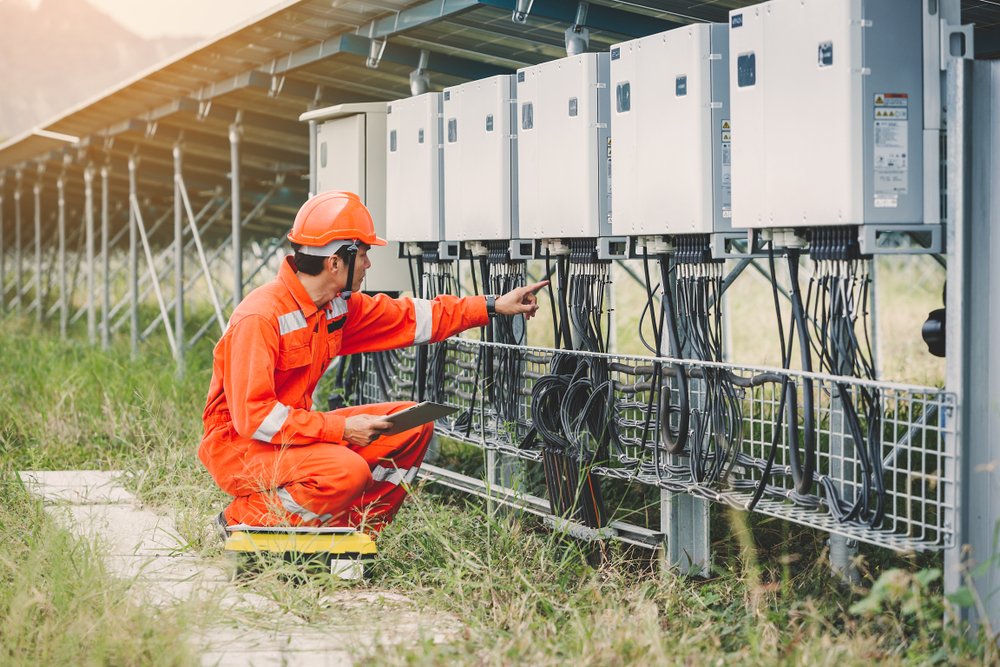
A string inverter system organizes the power output of a group of solar panels in the system into a single unit called “strings”. These multiple strings are connected to a single inverter. The DC power from each solar panel together flows through a wiring connection to the inverter, and a sine wave conversion process helps to generate AC power.
These types of inverters are generally used in residential and small-scale commercial solar energy systems. Particularly, a string inverter is installed on a rooftop that has little or no shading.
In a series configuration, the solar panels in series feature wiring the positive terminal of a module to the negative terminal of the next panel, and the process continues for the entire string. Such type of wiring enhances the output voltage which can be calculated at the available terminals.
PROS:
- Budget-Friendly: Compared to other types of inverters, string inverters are cost-effective (including upfront and installation charges), since only fewer components and less labor are required.
- Straightforward Design: A single inverter with a simple design can handle the power output conversion from multiple panels, as fewer parts are enough to make up the entire system. For small to medium-range projects, the troubleshooting and repairing issues are simple and easily solved.
CONS:
- Sensitivity due to Single-Panel Issues: Even if a single panel is shaded completely or partially, the output of the entire string is cut down to its lowest performance and affects the overall system’s efficiency.
- Shorter Lifespan: String inverters generate excess heat during the operation, and installing them outdoors can result in faster degradation of components.
- Safety: Since string inverters handle a combined output array, they operate at much higher DC voltages, which increases the possibility of electric shock if they aren’t used cautiously.
2. Microinverters
Microinverters are categorized as module-level power electronics (MLPE) devices, installed and operated at lower panel individual sites to perform the DC-to-AC conversion process.
Unlike the string inverters’ centralized system, microinverters operate independently and effectively despite the shading issues, which makes them suitable for complex installations.
Microinverters optimally adjust energy production based on the specific environmental conditions, to ensure each solar panel in your system contributes the highest possible power output. The combination of maximum power point tracking (MPPT) technology is an essential feature that alters the panel’s voltage and current to generate the most possible energy and adapt to the requirements of household appliances or the power grid.
PROS:
- Enhanced efficiency and production: Microinverters work on individual solar panels and reduce impact due to poorly equipped neighboring panels of an overall system to increase efficiency and production. Particularly, they are suitable for installations where there are frequent shadings or variations in the panel’s orientation.
- Strong Monitoring Capability: The in-built monitoring systems help track each panel’s performance to identify specific issues and inefficiencies in the system for effective maintenance.
- High Reliability and Warranty: The modern microinverters come with a 25-year warranty that complies with the lifespan of solar panels to ensure long-term reliability and performance.
- Elevated safety, Flexibility, and Scalability: Microinverters with greater flexibility in terms of system design and expansion allow pairing additional devices and operating at lower voltage, thereby reducing the fire hazards and mitigating the risk of high voltage DC arcing.
CONS:
- Huge Upfront Costs: Due to its long-term performance, microinverters have higher upfront costs compared to other inverters.
- Complex installation and higher maintenance: The installation process can be time-consuming and complex since micro inverters need to be set up for each solar panel, which translates to multiple potential points of failure, thereby increasing maintenance issues.
3. String Inverters with Optimizers
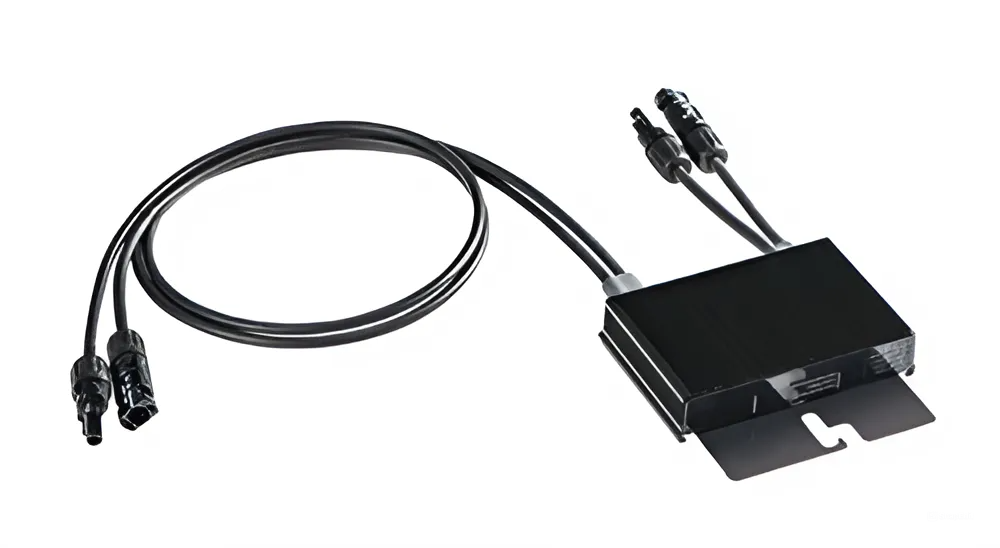
Combining string inverters and optimizers lowers the shading impact and operates at its maximum power point. As a result, this mechanism amplifies the overall system’s efficiency.
Additionally, these optimizers monitor each panel to provide a perfect indicative data point, thereby allowing a greater flexible design system that accommodates different panel orientations and expansions easily.
PROS:
- Increased Efficiency in partially shaded conditions: The DC output of the modules will be below average if the solar panels are partially shaded or installed on a roof with variations in angles. This can be corrected by using power optimizers to increase the output of panels that are affected by shading.
- Small-sized solar inverters: The solar inverter attached to power-optimized solar modules can be small-sized due to the voltage tracking and optimizing processes occurring at an individual level. In simpler terms, if the inverter model for such type of system is less bulky, the voltage capacity must be identical to the total potential output.
- Fewer interruptions in DC output: If a single optimizer fails, the solar panels attached will still generate electricity without any interruptions. Conversely, a failure in the microinverter forces the DC power to shut down the panel.
CONS:
- Additional Investment: You need to install each power optimizer for every solar panel individually, which can add up to your overall investment. Despite being cheaper than microinverters, they are still more expensive than standard string inverters.
- Limited inverter selection: Since power optimizers are new to the market, it can be challenging to find the perfect solar inverter.
4. Hybrid Inverters
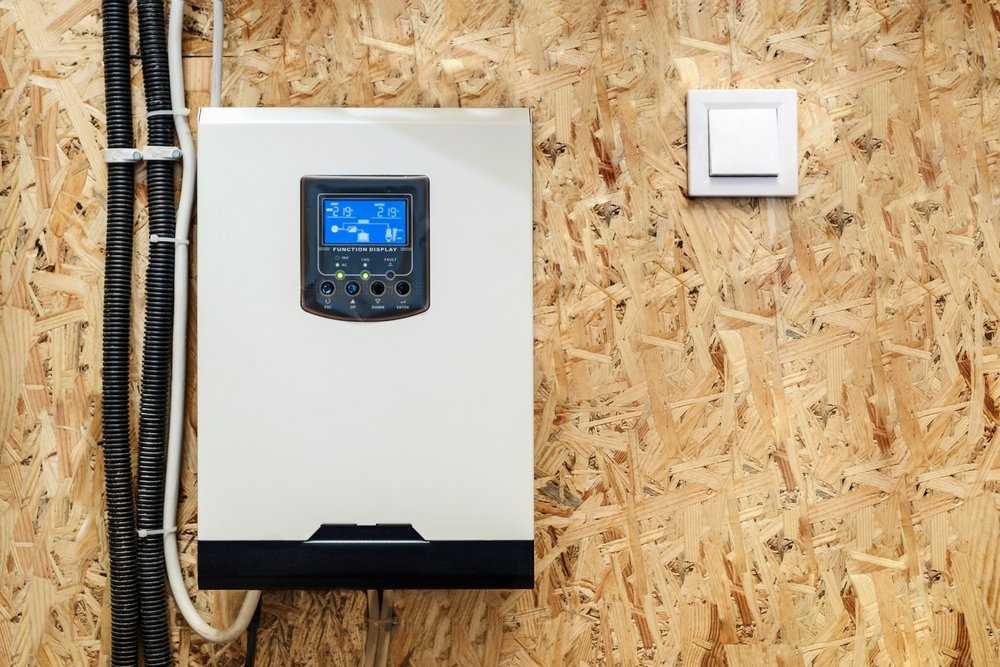
A hybrid inverter is a new integration of a standard solar inverter and a battery inverter into a single device to handle power from your solar panels, solar batteries, and utility grid simultaneously, and their functionalities are explained below:
- Standard Solar inverter connected to the grid: DC-to-AC power conversion process and excess electricity transferred to the utility grid.
- Battery inverter: DC electricity (stored in solar battery storage) to AC electricity (Power your homes).
The dual functionality of solar hybrid grid-tie inverters includes converting DC electricity into AC electricity to power your home. Also, the device can utilize AC electricity from the grid and convert it into DC electricity, which can be stored in batteries for future usage. Here is more details about hybrid inverter.
PROS:
- Consistent Power: A hybrid inverter integrated with solar battery system storage is the best solution to have both off-grid and on-grid capabilities so that you can access power even during outages.
- Convenience in energy monitoring: Using a hybrid inverter helps in easy energy monitoring because you can check relevant data such as the performance and energy production through the inverter panel.
CONS:
- Not suitable for upgrading the existing system: It wouldn’t be possible to upgrade your existing solar system to include battery storage if you choose a hybrid inverter, which might require a complete and expensive rework of your solar panel system. This is because the system is equipped with a grid-tied solar inverter and additionally requires an AC-coupled battery to expand your system.
- Limited future design flexibility: Since the solar battery design changes with technological advancements, your future options might be limited due to compatibility issues (if you plan to add a solar energy battery later) as the hybrid inverter cannot work with all types of batteries.
How to Choose the Right Solar Inverter?
Here are the steps you should determine to choose the best solar inverter:
- Estimate your solar power requirements.
- Understand about different types of inverters and technologies used.
- Evaluate inverter efficiency.
- Analyze the overall performance.
- Calculate the sizing requirements.
- Integration with solar panels and system components.
- Checking installation and maintenance requirements.
- Figure out the cost and budget considerations.
- Check for reviews from genuine sources.
To select the right type of solar inverter, you should consider these factors:
1. System’s Grid Connectivity: The inverter you choose depends upon whether your system is connected to the grid or not (on-grid and off-grid).
2. Solar Panel Configuration: The configuration of your solar panels can influence the type of inverter you decide. For instance, if your solar panels are installed in different orientations or have some shading effect, then microinverters or power optimizers might be the ideal choice.
3. Power Output Needs: The power output means the maximum AC electricity that the inverter can produce, and you need to select the best inverter with a power output that is the same as the capacity of your solar panels.
4. Efficiency Requirements: Efficiency is a crucial factor in determining the percentage of DC electricity converted into consumable AC electricity. In simpler words, the higher efficiency results in more amount of electricity generated by your solar system.
5. Type of wave output for off-grid systems: Pure sine wave inverters produce a smooth and consistent wave output, similar to a standard power outlet in your home. These sine waves can be used to power sensitive electronic devices such as laptops, televisions, medical equipment, and other appliances that require high-quality AC power.
Conclusion
The selection of the best inverters is a crucial step that impacts the overall performance, efficiency, and user satisfaction in the long run. It is important to determine its compatibility by choosing the correct inverter size based on your solar panel capacity and energy requirements by considering the outdoor design, power rating, and installation conditions.
Mainly, the expense of solar inverters is one of the most crucial factors to figure out if your overall solar power system will be cost-effective or not. For example, string solar inverters for residential purposes range from $1,000 to $2,000 and appear to be the most affordable option than the expensive types such as microinverters ($1,000 or more), power optimizers ($50 to $200 per panel), and hybrid inverters ($1,000 to $3,000 or more).
Additionally, you need to check for the manufacturer’s reputation for their quality and reliability. Finally, check if the inverter has certifications such as the CEC approval, which indicates that it complies with industry standards and regulations to guarantee that the conversion process of DC to AC electricity will be safer for home use.
Ray is an avid reader and writer with over 25 years of experience serving various domestic and multinational private and public energy companies in the USA.

